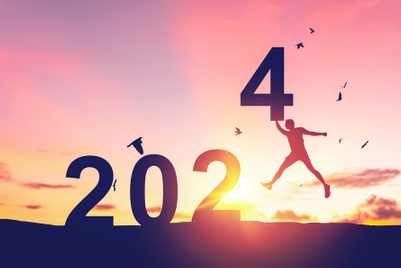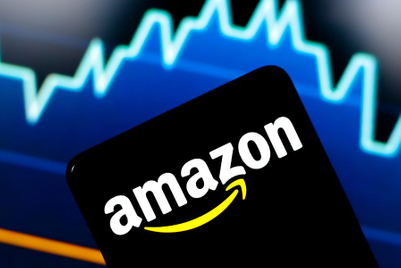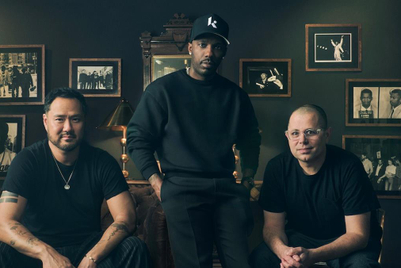.jpg&h=570&w=855&q=100&v=20250320&c=1)
Coming up with accurate predictions for the year ahead seems a little ambitious and absurd given the volatility of the post-pandemic world so far.
Thankfully, in the microcosm of marketing, experts can make a few educated guesses that are likely to pay off. These are powered by any or all of the following: decades of experience in the business, reams of bespoke research, and new-fangled AI-based tools that help cut through the clutter and arrive at useful and usable insights.
Our editors provide a further layer of filtering, trawling through reams of reports and research that began to land in our inboxes as early as November. We bring you yet another easy-to-digest overview of the major trends likely to play out through 2025 in a handy guide. Stay tuned for updates through the rest of this month.
WHAT TO WATCH OUT FOR IN 2025
Smart eyewear could finally have its breakthrough year in 2025
Source: VML’s The Future 100 2025
Smart eyewear has endured a bumpy ride for over a decade now. Launched in 2014, Google Glass did not catch on and suffered the ignominy of being described as “a prophylactic” by marketing professor and author Scott Galloway. Snap’s glasses launched in 2017 and soon disappeared without a trace; Vision Pro from last year came with a $3,499 sticker price that alienated everyone but the most dedicated members of Apple’s fanbase.
This could be the year when the smart eyewear category finally see the light. GrandView Research valued the global smart glasses market in 2024 at $1.93 billion but expects CAGR of 27.3% from 2025 to 2030. Ray Ban’s Meta glasses are topping the sales charts in 60% of the EMEA stores run by EssilorLuxottica, Ray-Ban’s parent company.
Samsung and Google have announced a headset based on the new Android XR operating system and even if the launch—initially rumoured to be happening this year—has been pushed, the battle lines are drawn. According to VML for brands, smart glasses will be a canvas for novel experiences and an opportunity to forge fresh connections with customers. The agency does not see it replacing other interfaces. For consumers, it could mean an interface that transcends the limitations of the smartphone, and for better or worse, a step towards a Ready Player One-esque future.
Consumers are losing their patience with companies and seeking alternate sources of advice
Source: Accenture Song’s Life Trends 2025
Consumers are arguably in more of a hurry than they have ever been before. Companies are soon going to realise that a delayed customer is a lost customer. Crowdsourced information is filling the knowledge gap left by companies for 55% of consumers, even if it means exploring risky paths to meet their health or financial goals. In China, eight out of 10 consumers would like a faster response from companies. Interestingly enough, this trend is driven more by impatience than lack of trust—since 68% claim they would engage more with a brand that educates them with blogs and videos. Brands would do well to fill this void before it is taken over entirely by influencers whose advice and recommendations can be unreliable or actively harmful.
Consumers will use instant retail for high ticket purchases
Source: COE@OMG’s China Trends Report 2025
Instant retail also known as quick commerce—an offshoot of ecommerce that focuses on deliveries within a half hour or less time frame—is booming in markets like China and India and set to grow through 2025 and beyond.
The market size in China is poised to exceed RMB 1 trillion ($137 billion) growing annually at 29% according to a report from the Academy of International Trade and Economic Cooperation and the Ministry of Commerce. In India, the market size of quick commerce is expected to reach $9.95 billion by 2029 according to a report from financial services firm Chryseum. In both markets, the category has grown on the back of moving past stocking a small selection of groceries to a high margin assortment including cosmetics and 3C digital products (computers, communication, and consumer electronics). Sony Electronics collaborated with Indian quick commerce firm Blinkit to offers its flagship PlayStation 5 console for delivery within 10 minutes across Mumbai, Delhi, and Bengaluru. Users in China make high ticket purchases including iPhones on instant retail platforms.
Particularly in metros, instant retail is being driven by consumers who are time strapped and breaking out of planned consumption patterns, while also seeking instant gratification. Marketers wishing to ride the wave of instant retail must sharpen their media strategies and messaging to focus on timeliness and localisation.
To secure a competitive advantage, brands will have to imbue their AI with a unique personality
Source: Accenture’s Technology Vision 2025
As the excitement around AI-generated content settles, a new concern has emerged: the risk of brand homogenisation. While AI delivers operational efficiencies, it often produces generic, repetitive content that can strip brands of their individuality. The issue stems from foundation models, which are designed for neutrality, broad applicability and not personality. This neutrality, however, can make brands look and sound alike, creating a sea of sameness.
To stand out, companies must ensure their AI-powered tools reflect a distinctive, brand-consistent voice. This is especially critical as Gartner predicts that by 2027, chatbots will become the primary customer service channel for 25% of businesses. For early adopters, the challenge is to balance AI’s scale and efficiency with a unique brand identity and tone. Those who succeed will secure an edge in an increasingly uniform digital landscape.
The comments section is becoming a real-time focus group
Source: TikTok’s what’s next 2025 trend report
“Ignore the comments section” is usually considered one of the best pieces of advice for life on the internet—even if it is more prescribed than followed. Comments sections are often full of trolling and ad hominem attacks. Given the negativity bias that most of us are saddled with, they can have an impact on one’s psyche.
However, brands are being encouraged to play by different rules. On TikTok, 68% of users believe a brand should pay attention to the comments section to arrive at a better understanding of its consumers. While most brands rely on traditional focus groups for feedback, comments are being regarded as the new focus group: a real time and more importantly, real representation of people’s feelings. Comments are particularly helpful while updating products or adding new variants. A restaging based on comments can attract more attention and give brands bragging rights on platforms like TikTok when it comes to customer responsiveness.
Engaging with cultural moments is a necessary investment for brands
Source: Teads’ Tech themes 2025
Aligning campaigns with occasions that are meaningful to consumers delivers great results. The definition of these occasions and cultural moments has changed significantly. While large sporting tournaments such as the Olympics still count, so do more everyday topical and social occasions. Data plays a key role in understanding which cultural moments are the most relevant by analysing pageviews, consumer trends and audience behaviour. The stakes are high since ads placed during cultural moments achieve 25% higher engagement. Brands stand to unlock a 15-20% lift in ROI by customising their campaigns to such moments, raising purchase intent by over 33%.
Gen Z social-media users in China find offbeat solutions to urban loneliness
Source: Soul App and Fudan University’s 2025 Gen Z Social Trend Report
GenZ in China crave connections without the more messy and complex dynamics of interpersonal interaction. They seek out their peers over live chat—not for conversation or commentary, but instead to hear the soundtrack of the life of a stranger in a non-intrusive way.
#SilentConnectLive secured over 800 million views on China-based social-media app Soul. The voice chat without words provides ambient sounds that offer a sense of connection, but no obligation to connect, making Gen Z Chinese social-media users feel less isolated.
They are also not paying heed to the sci-fi films that have warned us about the dangers of forging attachments with AI-powered companions. As finding a support network of friends becomes increasingly difficult in the hustle of metropolitan life, a third of youngsters are willing to befriend AI and over 50% are of the view that AI driven products can ease loneliness. AI virtual partners on the Soul app drew the attention of over 1.3 million users. A survey from Soul revealed that 40% of respondents are willing to confide in a virtual being and the majority believe that these AI-generated characters provide emotional value.
Bundling is making a comeback as streaming subscribers get more cost conscious
Source: Dentsu’s The year of impact – 2025 media trends
There is a growing consciousness of the impact of subscriptions to multiple streaming services on a monthly household budget. It doesn’t help that the platforms are now taking a very hard line against password sharing. Last year, Netflix extended its crackdown to 103 countries including Australia and Singapore. Viewers have begun to pause their subscriptions, renewing only in time to watch a favourite show, to avoid paying for several services simultaneously.
Against this backdrop, bundling is making a comeback worldwide and all options are on the table when it comes to collaborations. For instance, Netflix ran a pilot in France with Carrefour supermarkets in which subscribers can access content from Netflix, get discounts on store brands, and save on delivery fees. The possibility for synergies exist in India too where a merger between Reliance and Disney could potentially bring everything from Disney+ content, HBO, Peacock and Paramount+ under a single umbrella.
There's nothing modest about the growth in the modest wear segment
While sportswear and activewear continue their dominance of the apparel industry, modest wear—apparel and footwear favoured by Muslim consumers—is on a remarkable growth trajectory. The State of the Global Islamic Economy 2023/2024 report expects Muslim consumers to spend a whopping $428 billion on apparel and footwear by 2027, up from $318 billion in 2022, growing at a CAGR of 6.1%.
This estimate is ratified by findings from the Trender report created by fashion and apparel focused ecommerce firm Zalora. The report points to a 33% year-on-year growth in modest wear during Q1 2024, fuelled by shopping around the Hari Raya festival. In Malaysia, consumers are gravitating towards premium offerings within the modest wear category with 25% of consumers opting for purchases in the $47 to $62 price bracket. Hijabs are becoming status symbols in Malaysia according to a report from Janio Asia, with an RM 800 ($177) limited edition hijab selling out in five minutes. Malaysia-based Bawal Exclusive sold a custom-made hijab featuring Japanese textiles and crystals from Swarovski for RM 50,000 ($11,182), indicating a growing appetite for luxury modest wear.
To tap into a growing niche like modest wear, brands would do well to cast aside pre-conceived notions about the audience, and realise that given the diversity of customer segments, a one-size-fits-all approach will deliver only limited success.
Goodbye generic ads, hello bespoke experiences
Source: Trend 2025 from InMobi
The promise of truly personal communication has been the holy grail of marketing through much of the digital era. There have been several barriers to accomplishing this goal ranging from data requirements to the expense involved in creating and delivering a message to an audience of one.
However, the move from a broadly “personalised” internet to a truly “personal” internet is now closer than ever before.
Vasuta Agarwal, chief business officer, consumer, and performance at InMobi believed this change will be driven by the rise of generative advertising. Built on AI’s ability to revolutionise areas such as audience targeting, pricing strategies, and supply path optimisation, generative advertising will help brands operate with greater precision. Brands will be able to understand a consumer’s unique content consumption patterns and seamlessly integrate tailored advertising to deliver bespoke experiences.
Conversational AI will be the next big thing
Source: Sinch's 2025 predictions on digital customer communications
While we are yet to encounter a single customer who relishes the prospect of speaking to an AI-powered chatbot instead of an actual human, that could change through the course of this year. Communication platform as a service firm Sinch predicts that “generative AI will be a game changer”, estimating that 80% of enterprises are expected to adopt conversational AI by 2025. With these advancements in AI, notifications that were previously delivered via SMS will switch to the more interactive RCS (rich communication service) messaging format. Notifications will thus have the potential to become a valuable touchpoint, allowing a customer to schedule deliveries or make purchases directly within a message. Conversational commerce enabled by AI will also help apps double up as digital storefronts. Customers will be able to browse, interact, and make purchases without having to exit the app.
Less noise, more loyalty and the power of fandoms
Source: We Are Social's Think Forward 2025 report
Through 2025, there will be a push back against the maximalist impulses that have driven internet culture over the past few years. A report from We Are Social has identified a backlash against “a treadmill of micro trends, notifications and noise online.” Part of this trend is an increased participation in fandoms of different sorts—people bound by a common interest or passion wanting to feel a part of something bigger. As a result, marketers are curating and creating intimate experiences that are aimed at customer-only or closed social groups. Some brands have begun prioritising community bonding trips for regular customers rather than influencers to tap into these more personal fan-based connections.


.jpg&h=334&w=500&q=100&v=20250320&c=1)

.jpg&h=334&w=500&q=100&v=20250320&c=1)
.jpg&h=334&w=500&q=100&v=20250320&c=1)

.jpeg&h=334&w=500&q=100&v=20250320&c=1)


.jpg&h=334&w=500&q=100&v=20250320&c=1)


.jpg&h=268&w=401&q=100&v=20250320&c=1)




.jpg&h=268&w=401&q=100&v=20250320&c=1)
